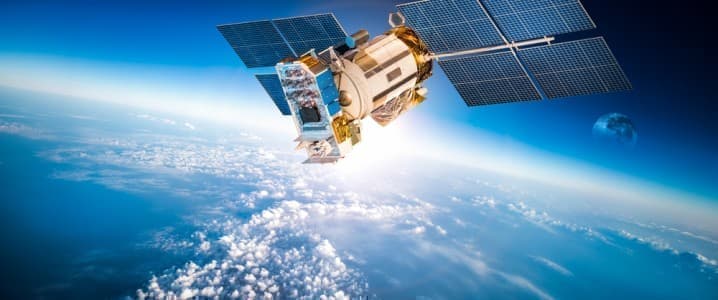Engineers at the California Institute of Technology (Caltech) have achieved a major breakthrough in the ongoing development of space-based solar power. The university recently reported that its experimental Space Solar Power Demonstrator (SSPD-1) successfully beamed solar power from space back down to Earth in a historic first which could spark major interest in what many think is the next frontier in clean energy production.
It’s become increasingly clear that one of the biggest hurdles for scaling solar and wind power is that these forms of energy are variable, meaning that their production rates wax and wane according to the time of day, the time of year, and weather patterns. And usually the rates of peak energy production are the opposite of peak energy demand; for example, just as the sun is setting on solar panels, ending their productivity for the day, most households are switching on the lights.
Finding a way to either work with or somehow sidestep the variability of renewable energies is therefore a crucial part of the pathway to a successful green energy revolution. While most of the focus is on developing better and longer-lasting forms of energy storage which could capture surplus production and feed that energy back into the grid when it’s needed, other scientists are trying to find a way to turn renewable energies into baseload powers. One of those ways is by putting solar farms where the sun never sets and seasons don’t exist: beyond the Earth’s atmosphere.
The idea of building solar farms in space is not a new one. Scientists have been talking about the possibility of space-age solar for 100 years, but until now it’s been far more fiction than fact. But thanks to the falling cost of space launches and infrastructure, there is a new space race unfolding around the world. Private interests are increasingly becoming involved in space-based technologies and exploration, and the field has never been more ripe for innovation. Institutions from Caltech to the European Space Agency (ESA) have been trying to figure out how to channel all of that opportunity toward solution building for the global energy transition, and “China has announced plans to put a megawatt-scale demonstration unit in low Earth orbit in 2028, before deploying another system to a more distant geosynchronous orbit in 2030,” reported Nature earlier this year.
“And so began the race to wirelessly transmit power from orbit to Earth,” IFLScience wrote earlier this month. And now Caltech is reporting that they’ve achieved that crucial step with a system that they claim is more lightweight and cost-effective than what they’re competitors are trying. The Caltech experiment used a system called the Microwave Array for Power-transfer Low-orbit Experiment (MAPLE), which is an array of transmitters capable of aiming and beaming energy in a specified direction. “To do so, MAPLE receives transmitted energy, converts it to direct current (DC), and then uses it to power LEDs in sequence to demonstrate all is going well,” IFLScience reports. “When tested with their experimental satellite in orbit, MAPLE was able to receive energy directed towards it in space and then direct it back towards Earth, where the researchers at Caltech picked it up.”
This breakthrough is of enormous significance and shows that solar in space could be a viable option which would seriously improve our chances of a speedy transition away from fossil fuels. But the technology still has a long way to go. In order to be commercially viable and environmentally significant, space-based solar power will have to be deployed on a massive scale. Future lans for such orbital solar farms are kilometers wide, and will be built about 36,000 kilometers (about 24,000 miles) into the Earth’s atmosphere. And the receivers receiving this beamed energy will have to be even larger than the solar farms themselves. These real estate needs alone present a major for the buildout of space-based soalr, as terrestrial solar farms are already facing major land use challenges.
It’s a tall order, but it’s not impossible. There’s nothing outlandish in this that would require new physics,” James Carpenter, who is currently leading a feasibility study for ESA, was quoted by Nature. “Economically, it’s comparable, for example, with nuclear power.”
By Haley Zaremba for Oilprice.com
More Top Reads From Oilprice.com:
- Iran Plans To Create A Regional Natural Gas Hub
- Aramco To Supply Full Crude Volumes To Asian Refiners Despite Production Cut
- U.S. Energy Infrastructure To Get A Major Bump



















My congratulations to CalTech as this could be significant beyond words!!!!